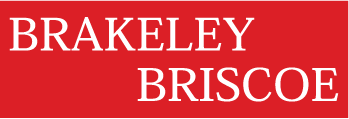Creative Counseling for 21st Century Community Hospital Campaigns
Thomas R. PooIe
Recent changes in healthcare financing have increased the focus of hospital leaders on the role of philanthropy in funding the bottom line. When effectively structured and conducted, community hospital campaigns raise philanthropic giving to a level previously thought beyond reach. Most 21st century community hospitals possess many of the key building blocks to launch a successful capital or major gifts campaign. These include:
- Sharply defined needs
- Well-articulated case for support
- Passionate and articulate volunteers
- True partnership with physicians
- Seasoned professional fundraising staff
Often, however, these building blocks are not well developed. Brakeley Briscoe believes that most campaigns are feasible, that is why we conduct “planning studies” rather than “feasibility studies.” Our approach is that we work with you as strategic counsel throughout the fundraising process to develop the building blocks. If you need leadership we work with you to enlist leadership. If you need new prospects to reach your goal we work with you to find new prospects and raise the giving sights of your existing donors.
Needs
At a time of rapidly changing technology, any hospital CEO, CFO, physician, or even patient can likely rattle off $100 million of capital needs without having to think very hard. However, determining which capital needs should be the focus of a campaign may be much more difficult. And a further problem is that the costs are often so large that the capital campaign may not be able to fund the entire amount required for any one of the needs. Still, it is essential to pick needs that will resonate with potential donors. The ER, pediatrics, oncology, and women’s health issues may resonate more with donors than the new parking lot or administrative offices, As long as a need is part of the hospital’s strategic plan, most moneys are fungible so that funds raised in a capital campaign can relieve financial pressure for some much-needed but less glamorous item.
Case for Support
It may be clear to hospital administrators and staff why a renovated pediatric ER or another da Vinci machine is essential, but it’s not likely to be so clear to a donor. In the 20th century, donors often gave to the campaign because the community hospital was indeed the local gem. But in an increasingly complex and confusing world where donors are asked daily to give to all kinds of causes, the case needs to be clear, logical, compelling, and SHORT. It needs to appeal to the heart and the mind. Twenty-first century donors often want to see the numbers: “If I give X, what will be the tangible results?” “How will healthcare be improved?”
Volunteers
Campaigns have always run on volunteers who identify, cultivate, and ASK potential donors. Often times, hospital board members have been recruited with an explicit statement that they are there for their knowledge and not for their money and that they don’t need to give. They may have been told that it’s the foundation board’s job to bring in philanthropic money, while the hospital board’s job is to run the hospital. Even foundation boards may have been recruited with the understanding that they should attend the gala, bid on a vacation house, and manage the foundation staff in its activity of running the annual fund, but that making and getting major donations was the staff’s job. Butin the 21st century it is essential that both these boards participate actively in a capital campaign, which means giving, cultivating, and asking.
Partnership with Physicians
Traditionally, capital campaign leaders.looked to physicians as potential lead donors for various reasons: they often had the understanding of the hospital, a personal and financial interest in the successful outcome of the campaign, and the financial assets to make major donations.
Now, in a time of change in healthcare delivery and financing, physicians are on the front lines of these changes.Although some physicians still have the capacity to be leading donors in a capital campaign, many do not. So the ability of physicians to identify grateful patients and provide expert testimony to potential donors regarding validity of the needs is often more important than their roles as donors. Although some would argue that HIPAA regulations make it difficult for physicians to identify grateful patients, we would argue that the legislation and regulations simply codify the rules for working with grateful patients.
Role of Professional Staff
The most sensitive relationship in campaign management is the one between the professional(foundation) staff and the consultant. Two or three decades ago consultants tended to take complete charge of the campaign leaving staff to continue their existing duties. In the 21st century foundation staffs are more sophisticated and capable of managing the campaign. Using the consultant as “strategic counsel” rather than direct campaign manager is increasingly common. The consultant helps to design campaign strategy, provides support and coaching as needed to foundation staff and campaign leaders, trouble shoots, and brings the experience and perspective gained in advising many other campaigns.
